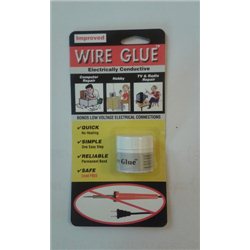A worm gear is a type of gear used in model motors that consists of a screw-like shaft (known as a worm) and a wheel...
No products
Product successfully added to your shopping cart
There are 0 items in your cart. There is 1 item in your cart.
Search Tips
Where could I best use Electrically Conductive paint on my layout ?
Electrically conductive paint can be used in a variety of ways on a model railway layout. One common application is to create electrical connections between different sections of track or between track and other electrical components. As such, it can be a practical alternative to electrical wiring.
For example, a modeller could use conductive paint to create a "jump wire" between two sections of track that might not be properly connected or to create a connection between a section of track and a turnout or other accessory.
Another application for conductive paint is to create custom electronic circuits on a layout. For example, it could be possible to use conductive paint to create a circuit for controlling signals, lights or other accessories. It can also be used to provide other scene elements with electrical connectivity, such as traffic lights or street lights, or even to cameo figures such as a station master with a light signal or the lights on a bicycle. With planning and care, the EC paint can then be subsequently hidden by scenery or other layout features.
When using conductive paint, it is important to follow the manufacturer's instructions carefully and to take appropriate safety precautions. Make sure to wear gloves and work in a well-ventilated area, as the paint can be toxic if ingested or inhaled. Also, be sure to let the paint dry completely before applying power to any circuits or connections.
Click here to receive the tips weekly in your mailbox. You can unsubscribe at any time.








